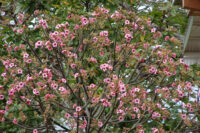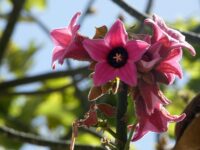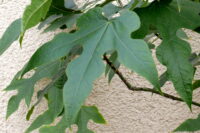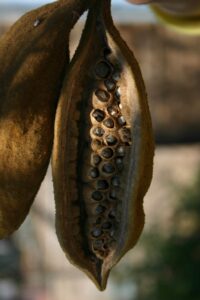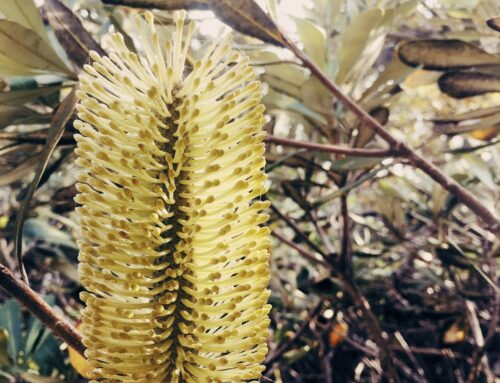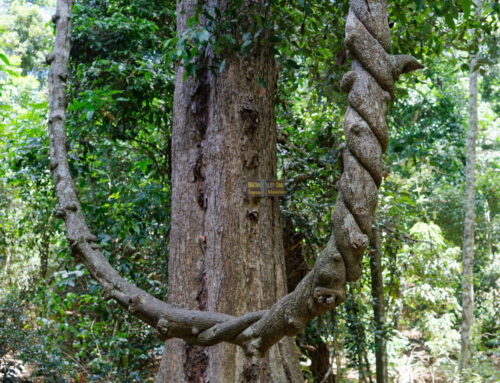Pronunciation: Brachychiton (brack-ee-KY-ton) discolor (diss-KUL-uh)
Brachychiton discolor, commonly known as the Lacebark is an Australian native tree.
Particularly known for its lush canopy and showy, pink flowers.
Taxonomy:
- Family: Malvaceae
- Genus: Brachychiton
Description:
- Growth:Tree typically grows between 10–20 meters in height. Distinctive, smooth, greyish bark when young that eventually develops a lace-like pattern as it matures, giving it its common name.
- Leaves: Large and lobed, often divided into 3–5 sections. They have a rough texture and are green on top and pale underneath.
- Flowers:Clusters of tubular, bell-shaped flowers that are pink to deep pink in colour.
- Seed: Woody pods that contain seeds that are coated in fine hairs.
Habitat and Distribution:
Native to eastern Australia, found in rainforests and subtropical regions of Queensland and New South Wales. Thrives in well-drained soils and can tolerate both full sun and partial shade. It is also quite hardy, tolerating drought once established.
Hosts: (included but not limited to)
- Rainbow Lorikeet (Trichoglossus moluccanus): Feeds on the flower’s nectar. Aids in pollination, as it moves pollen between flowers while feeding.
- Native Stingless Bees (Tetragonula carbonaria): Are known pollinators for Brachychiton species, attracted to the nectar-rich flowers of Brachychiton discolor. These bees gather nectar and pollen, playing a significant role in the pollination process.
- Monolepta Beetles (Monolepta genus): In certain regions, have been observed feeding on the leaves.
- Brushtail Possum (Trichosurus vulpecula): Feeds on the young leaves, flowers, and occasionally the fruit especially during flowering season when the tree is bare of foliage.
- Pied Currawong (Strepera graculina): Consume the seeds found in the tree’s woody seed pods. They act as dispersers by spreading seeds in their droppings.
- Noisy Miner (Manorina melanocephala): Feed on the nectar from the bright pink flowers and help with cross-pollination.
Ecology and Uses:
- Ornamental: Popular in ornamental landscaping due to its striking pink, bell-shaped flowers and lush canopy.
- Bushfood: Edible once roasted, though they need to be handled carefully due to fine hairs around them that can irritate the skin
- Livestock Fodder: During droughts or dry seasons, leaves and young shoots can be used as emergency fodder for livestock.
- Drought-Resistant: Suitable choice for xeriscaping (landscaping with plants that require minimal water).
Links:
Species profile—Brachychiton discolor | Environment, land and water | Queensland Government
Brachychiton discolor : Lacebark Tree | Atlas of Living Australia
- Tatters, via Flickr
- Linda De Volder, via Flickr
- Haplochromis, via Wikimedia Commons
- Tekwani,via Wikimedia Commons

